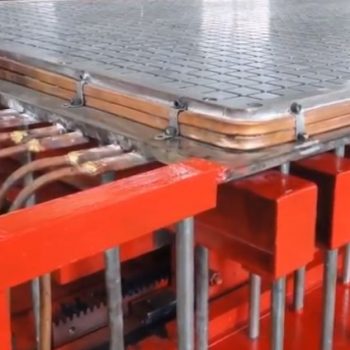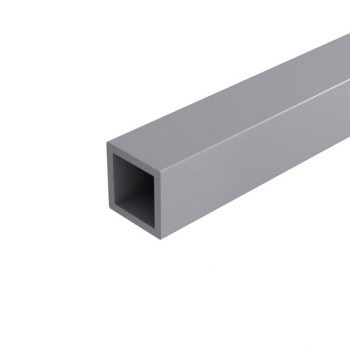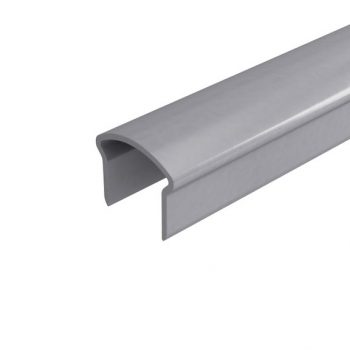What Does Grp Stand For
GRP stands for Glass Reinforced Plastic or Glass Reinforced Polymer. It is a very versatile material, which has a huge number of applications and uses. GRP is also often referred to as fibreglass (fiberglass in the The states) or glass fibre composite. GRP besides belongs to a larger family of products known as FRP, or Fibre Reinforced Plastics. We take compiled this in-depth guide to assist you get to grips with what GRP is made of, how it is manufactured and what it can exist used for.
What is GRP Material?
GRP is made up of a combination of glass fibre and polymer or plastic.
It has many desirable properties which include:
- High strength to weight ratio
- Excellent durability
- Lightweight
- Electrically non-conductive
- Radar/radio wave transparent
- Non-corroding
These backdrop brand for a very versatile composite material with many different applications. Fibreglass can offer significant advantages over other materials like concrete, steel, other metals. It's also a more adjustable material than non-reinforced thermoplastics such as nylon, polypropylene, or ABS (Acrylonitrile butadiene styrene).
So what is FRP?
FRP is curt for Fibre Reinforced Plastic or Fibre Reinforced Polymer. These are a grouping of what are known as 'composite' products. Composites are formed from a combination of a minimum of two dissimilar textile types, chosen for their complementary concrete and chemical backdrop. Yous could think of them every bit 'chemical cousins' of metal alloys.
Fibre strands are embedded in a polymer matrix resulting in both high compressive and tensile strengths in the finished products. Glass fibre is used to produce GRP, but other fibres and resin combinations may too be used to create different materials. These give the resulting blended materials dissimilar properties, making them suitable for a variety of applications. Hither's an overview:
Fibres used in composites:
- Glass (GRP or GFRP – drinking glass fibre reinforced polymer/plastic)
- Carbon (CFRP – carbon fibre reinforced polymer/plastic)
- Aramid (AFRP – aramid fibre reinforced polymer/plastic)
- Found-based fibres such as flax or bamboo – forming biocomposites
Resins used in composites:
- Polyester
- Vinylester
- Epoxy
- Polyurethane
- Biodegradable 'greenish' types
Other chemicals are also added to composites to change the advent and farther enhance certain characteristics of the final product.
Additives:
- Pigments (for colour)
- Mineral compounds (for fire retardancy)
- UV stabilisers (to reduce colour fade)
And then, 'FRP' is an umbrella term used to draw an array of blended materials rather than whatever unmarried blazon. The finished materials accept different properties and uses. This means they have a plethora of applications inside the engineering and manufacturing industries.
What is GRP composite textile fabricated from and why practice we utilize it?
GRP products are made from Glass fibre reinforced polymers, typically with a polyester or vinylester thermoset resin matrix. Thermoset polymers are formed by a chemical reaction, initiated by adding a catalyst, which causes an irreversible hardening of the resin. This is coupled with reinforcement, achieved by the incorporation of glass fibres during the production process. The fibres may exist in the form of fine long strands, chopped stands or woven mats. The production techniques past which this is accomplished are varied and can range from a unproblematic transmission procedure to one which is highly automatic, utilising robotic machinery. See below for farther information on these processes.
GRP has many useful properties which make the products very well suited to building and construction environments, exist they internal or external.
Here are more key benefits of using glass reinforced plastic, to add to those listed above:
- Trivial or no maintenance required
- Warm to the bear upon
- Practiced resistance to a wide range of chemicals
- Long service life
- Easy fabrication and machining – no hot works required when constructing using composites
- Flame retardant versions available
- Broad operating temperature range
- Sustainable – depression free energy manufacturing processes
- Resistant to insect infestation – a reliable alternative to woods, where deadening insects may ultimately undermine structural forcefulness
- Recycling – GRP waste tin can be reprocessed to provide free energy and raw textile for cement production
How are GRP products manufactured?
At that place are various production methods for the manufacturing of GRP products, depending on the desired shapes, properties and intended uses for finished articles.
Only for an instance, an Evergrip GRP Industrial Moulded Mesh Walkway Grating Console is produced by what is largely a manual process, using an open mould for curing. These panels can measure annihilation up to around iv.0 x 1.5m and may also range between 12 – 60mm in thickness. Here, using a comb-like tool the glass fibre strands are woven dorsum and forth across the length and width of the steel mould which has a cellular structure, to form the 'skeleton' of the finished of the panel.
The catalysed resin of the desired class and colour is then poured into the heated mould until the product has cured and hardened. The GRP gratings then take a coat of Aluminium Oxide grit adhered to the top surface. The photos beneath testify a typical example of the mould used.
Structural profiled sections, including GRP Handrail profiles, are manufactured through an automatic automobile process known equally Pultrusion. The photos below prove a machine-procedure schematic, mill layout (courtesy of Fiberline Composites a/s) and typical product sections that tin can be made using this technique.
GRP Hand Lay-up / Spray Lay-up Moulding
The Hand Lay-up process requires lilliputian in the way of tooling and is primarily used in low-volume production and bespoke fabricated GRP products. Manual skills nowadays in the operatives will determine the quality of the accomplished laminate.
The glass fibre reinforcement used is a woven or chopped strand mat and may also incorporate an inner coremat forming a sandwich betwixt the layers of glass for added strength. The materials are cut to size/shape before existence laid into (or onto) the surface of a waxed (the release agent) open mould. Resin is then applied with a roller or brush to fully saturate or 'wet' out the glass/core laminate. This is and then left to fully cure in a suitably ventilated, warm drying area for several hours or overnight. The office tin and so be removed, trimmed, top-coated/painted and polished equally required.
Improved surface finishes may be achieved with an initial gelcoat layer applied to the mould before the reinforcement is placed into information technology. The top or presented surface of the finished part is the side which is in contact with the mould. Here's a brusque video outlining the process:
The Spray Lay-up technique is a semi-automatic ane, requiring a different manual skill set. It utilises more expensive equipment and can often provide a reckoner-controlled resin/goad dosing organisation. A pressurised spray gun incorporating a glass fibre 'chopper' head unit is utilised to utilize the laminate to the mould in i continuous process. The fibre is fed from a bobbin and rapidly chopped into rovings by the tool, straight into the stream of resin existence practical to the mould. Typical applications would include manufacturing baths, storage tanks & boat hulls. The process can be seen here:
GRP Resin Transfer Moulding
Resin transfer moulding is the process of injecting a mixed resin under pressure into a mould. This process can produce smaller parts of consistently high quality and in production volumes. At that place is a longer video sit-in here which explains the process in full particular:
GRP Pinch Moulding
This process consists of a preheated polymer being placed into an open up mould cavity, before then being closed in by a top plug, in order for the textile to contact all areas of the mould. The process widely used in the production of parts for the automotive and transportation sectors and tin can comprise epoxy resin systems. A long-established manufacturer in the United States explains the organisation here:
GRP Long Fibre Injection Moulding
An advanced, highly automated process for larger precision-fabricated parts which require all the attributes of high forcefulness and stiffness but with light weight. Here the system uses a polyurethane matrix and long glass fibres applied past robot into a mould, where it is compressed, cures and hardens to the desired shape.
GRP Pultrusion
Pultrusion is also a highly mechanised industrial process used to create continuous lengths of GRP composite profiles. These structural shapes are often associated with load-bearing applications, for case, channels or beam sections. By means of this procedure, profiles have highly accurate and consistent cross-exclusive dimensions and therefore anticipated mechanical properties, allowing for the engineered design of structures. Originally developed in the USA, this procedure has been in apply for more than than fifty years and the engineering science employed ensures loftier quality is reproduced in every product run.
Densely packed continuous glass fibre rovings are fed from multiple bobbins. Along with reinforcements, fibreglass mats and what is called a "surface veil", they are then pulled by process machinery through a bath of resin. They are so passed through a high temperature and high-pressure mould, forming and curing the finished section shape. The completed sections are and then automatically cutting to specified lengths.
The type and structural shape of these finished products are determined past the blueprint of the mould.
Typical structural shapes include: Angles, Foursquare Tube, I Beam, Channel, Round Rod, Round Tube
The finished GRP products are light in weight yet very potent, maintenance-free and are suitable for a huge range of applications replacing traditionally used metals and woods. They accept a smooth surface and are resistant to corrosion, providing a maintenance-free, long term and price-effective solution.
Nosotros work closely with two established manufacturers of glass fibre pultruded products. Through these relationships, Evergrip tin can offer a consummate range of CE marked and certified fibreglass structural profiles with full European Technical Assessment (ETA) for use in construction in the United Kingdom and EEA market. The products are manufactured by Fiberline Composites A/Southward of Kingdom of denmark and represent the culmination of many years of research, development and investment. Take a look at this cursory video which shows pultrusion in activity inside their 'state of the art' factory:
We agree stock in the Uk of normally used structural profiles in various sizes and thicknesses, the majority of which accept enhanced burn-retardant properties to meet EN 13501 / BS 476 standards. We also welcome enquiries for new fibreglass profiles to be made, where there would be a significant volume usage. We also offer design and engineering verification services along with fabrication and on-site installation.
What can GRP be used for?
GRP products have an almost limitless array of potential applications. With applied science verification and creative design, in that location are uses in most markets for products made partially, or entirely from GRP materials. Here are some uses, arranged by sector:
Construction
- Stock-still and portable work platforms
- Lamp posts
- Stair towers
- Bridges
- Roof trim and roof lights
- Gutters
- Glazing systems
- Cooling tower structures
- Green house structures
- Building panel sections
- Reinforcing rods (rebar)
- Sign posts
- Signs
Electrical
- Transformer air duct spacer sticks
- Pole line hardware
- Ladders
- Bus bar supports
- Cable support trays
- U-shaped motor stator wedges
- Service truck booms
- Switch actuators
- Fuse tubes
Consumer/Recreational
- Canvass battens
- Tent poles
- Radio antennae
- Skate boards
- Tool handles
- Ski poles
- Hockey sticks
- Argue posts
- Paddle shafts
- Bows and arrows
- Crossbows
- Golf order shafts
- Flag poles
- Pole vault poles
- Umbrella shafts
Corrosion Resistant
- Bridges and platforms
- Not-slip floor coverings
- Floor gratings
- Handrails and guardrails
- Ladder cages
- Pipe supports
- Steps and stairs
- Structural supports
- Pipes and tubes
- Vesture plates
- Slide guides
- Internal tank supports
- Structural shapes
- Wet scrubbers for the ability industry
- Cable support trays
Transport
- Loading confined in trucks
- Kicking plates
- Subway contact rail covers
- Motorbus baggage racks
- Seating
- Flat sheets for refrigerated truck sides
- Leaf springs
WHY EVERGRIP ?
Since 2001, Evergrip have been focused on applications for GRP composite materials in the fields of safe access and structural support. With many long-serving staff, we have accrued valuable feel and knowledge in assisting clients in overcoming their problems in workplaces and public spaces, across almost all marketplace sectors.
The wearing surfaces of all Evergrip GRP Anti-slip walkway and Grating products incorporate a blanket of refined aluminium oxide aggregate, giving a virtually diamond-hard end. This provides outstanding resistance to long term vesture and nearly importantly, high levels of skid resistance, in both wet and dry weather condition.
Heir-apparent's Tip: junior quartz type grits available on some manufacturers' products should be avoided, equally these achieve only poor wear characteristics and hence, reduced product life and value.
Nosotros hope yous have found the content of this commodity to be interesting and informative and nosotros expect forrad to an opportunity of being of service to you. Delight feel free to browse our Products and Projects sections for more ideas and applications for glass reinforced plastic.
This website or its third-party tools use cookies, which are necessary to its functioning and required to achieve the purposes illustrated in the cookie policy. If you lot want to know more than or withdraw your consent to all or some of the cookies, please refer to the Privacy Policy. Nosotros'll assume you're ok with this, just y'all can opt-out if you wish.Cookie settingsACCEPT
27th March 2020
We are open for business
Covid 19 - Confirmation Argument
We would like to reassure all customers and enquirers that nosotros remain open for concern, while advisedly post-obit Government guidelines issued here:
https://world wide web.gov.britain/coronavirus
The majority of our administration staff are working remotely and we have rostered production staff to make numbers bachelor to meet demand.
We are able to provide the full range of our standard products from stock to serve whatsoever ongoing requirements you may have and will be pleased to receive any invitations to quote for future projects.
At the present fourth dimension, in accordance with social distancing regulations we will not be conducting face to face meetings with business partners until farther notice. However information technology may be possible to arrange video link meetings if required, please contact united states for further information.
Collections of orders from our workshops are possible, by prior organisation merely please and visitors are reminded to notice the standard 2m distancing rules, for the safety of all.
Our transport partners are all providing us with a normal service.
We will update this statement if required and following whatever further guidance issued by the UK Authorities.
We wish y'all well.
What Does Grp Stand For,
Source: https://evergrip.com/what-is-grp/
Posted by: taylorencell1939.blogspot.com








0 Response to "What Does Grp Stand For"
Post a Comment